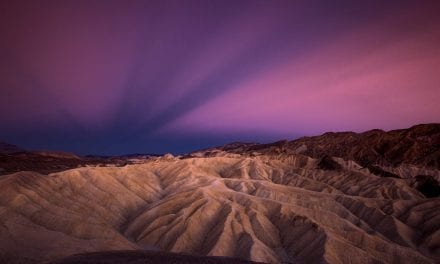
“When I first transitioned from film to a DSLR, I remember thinking, ‘Why does my camera need to be twice as large and heavy?’” recalls photographer Rick Hunter. “Sure, I understood that the electronics required for digital capture added to the size and weight of a DSLR, but add to that the several large, heavy lenses required for the type of work I do—it didn’t take long for me to realize the advantage of a smaller system.”
Carrying 50 pounds of equipment takes its toll on your back, Hunter says. “When I switched to the Olympus OM-D system, I found I could carry what I needed without that burden. The small size and lighter weight is what initially drew me to Olympus.”
Moving from one camera system to another is something professional photographers approach cautiously. After all, their livelihoods depend on the performance of their gear. “At first,” Hunter admits, “I was concerned about having to learn a new camera’s controls and settings. But very quickly I got accustomed to the new equipment, and now using my Olympus has become second nature.”
Hunter had also assumed that the larger size of his DSLR translated to better images. Seeing the photographs his colleagues were making with Olympus OM-D cameras helped changed his mind. “I produce 30×40-inch prints—hanging on the wall, I can’t tell the difference between my images shot with Olympus compared to my previous camera.”
A key advantage of the Olympus system for Hunter is maneuverability. “With a 600mm lens on my DSLR, it’s a huge lens to begin with, and I was frequently on a tripod. With the OM-D, I’m using the M.Zuiko 300mm f4.0 IS PRO and getting a 600mm-equivalent focal length. It’s much easier moving in and out of planes or boats or hiking through a bog in Alaska.” And Olympus’ advanced 5-Axis Sync IS, which compensates for all types of camera motion to provide up to 6.5 stops of correction when shooting handheld, means Hunter now typically leaves the tripod behind. “With 5 plus stops of correction, I can shoot handheld with the 300mm f4.0 IS PRO, even at slower shutter speeds.”
For Hunter, the 40-150mm f2.8 PRO plus a 1.4x teleconverter is another favorite combination, together giving him an equivalent range of 112-420mm. This lens, along with the 12-100mm f4.0 IS PRO and the 300mm f4.0 IS PRO provide an equivalent range of 24mm to 840mm (with teleconverter). “I carry less equipment than I had to carry with my DSLR system.”
One feature of the OM-D E-M1 Mark II camera that Hunter has found particularly advantageous is its Pro Capture Mode, which uses the silent electronic shutter to start buffering a running series of full-resolution images when you press the shutter release button halfway. Fully depress the shutter to immediately capture an image—plus the 14 previous frames—helping to ensure you never miss the decisive moment.
The combination of camera performance, image quality and ultra-sharp lenses in a lightweight system has made a huge difference in Hunter’s work, allowing him to create photographs from new perspectives that weren’t as accessible with a larger DSLR system. “Increased mobility has been a real reward.”
Hear more from other photographers who have made the switch to the Olympus OM-D system at getolympus.com/neverlookback.
The post Olympus OM-D System: Creative Mobility appeared first on Outdoor Photographer.
















